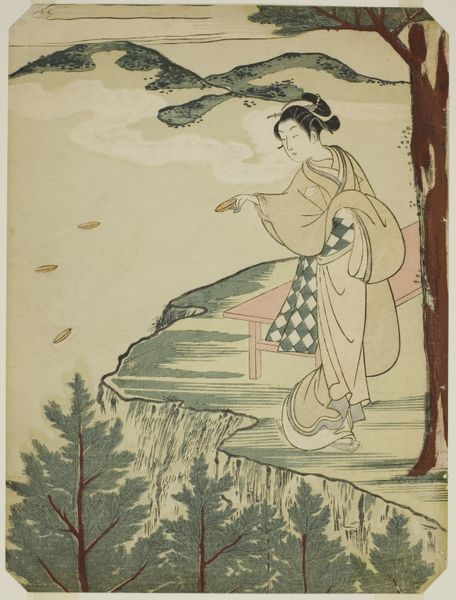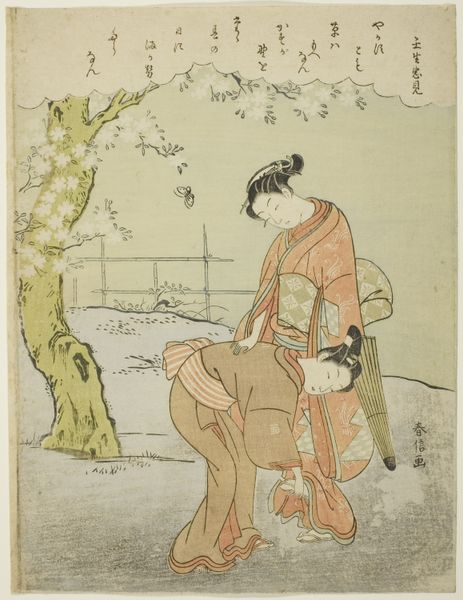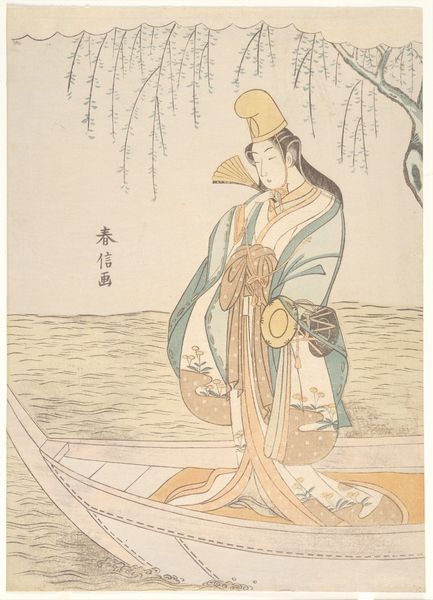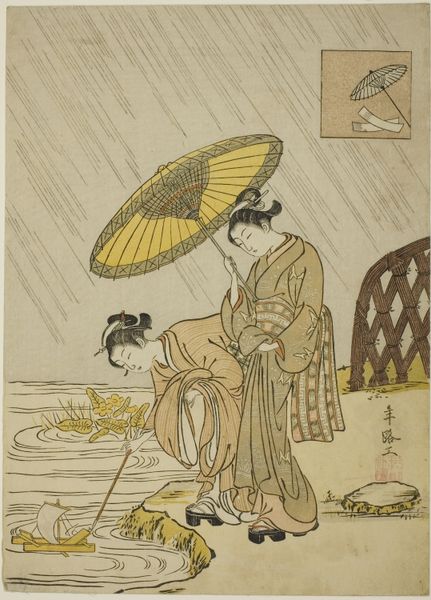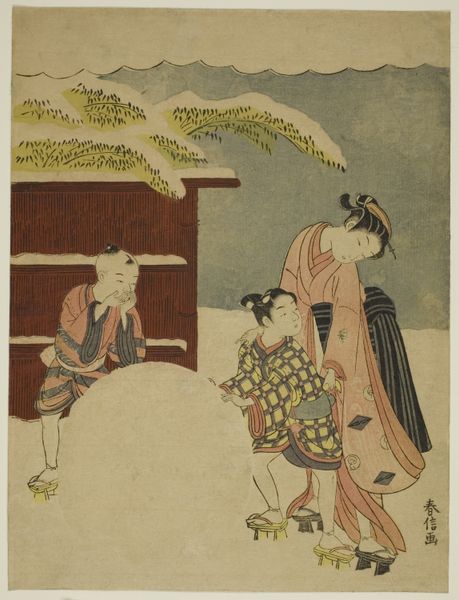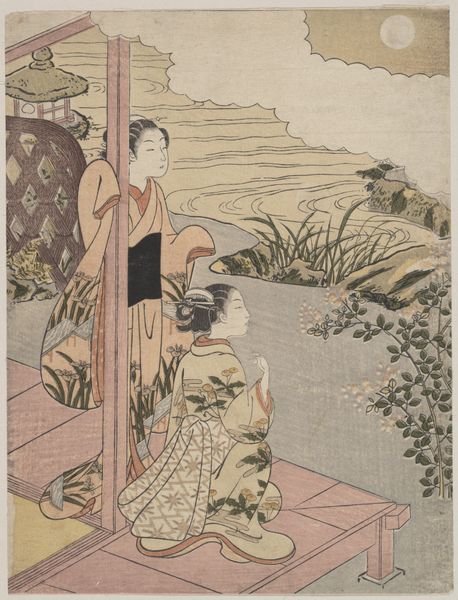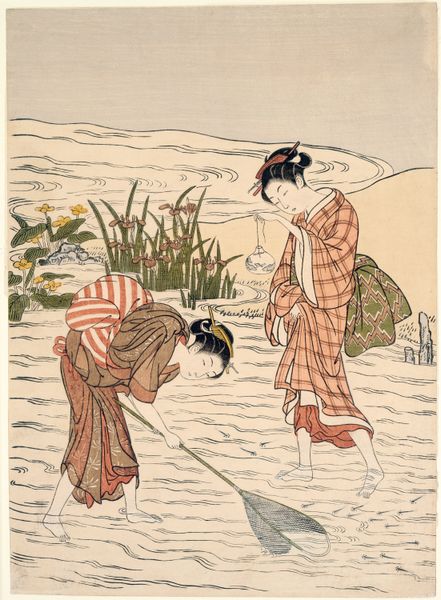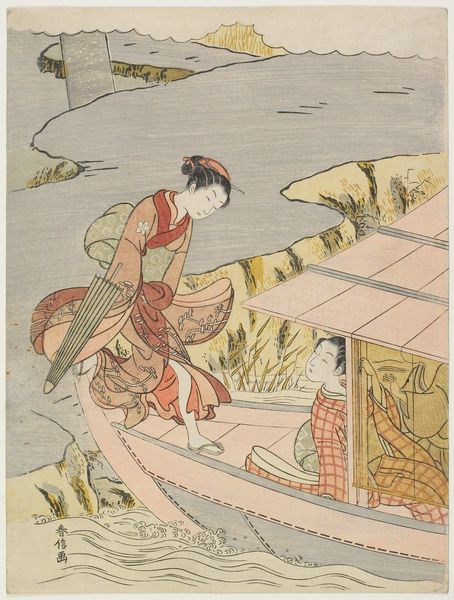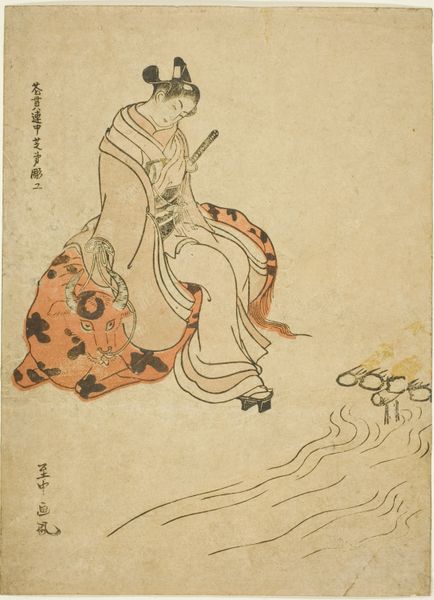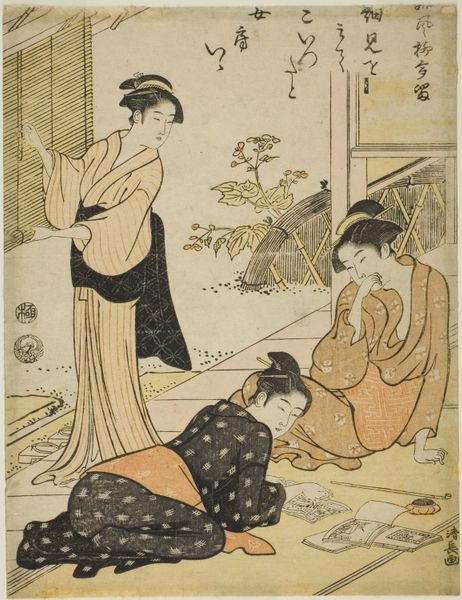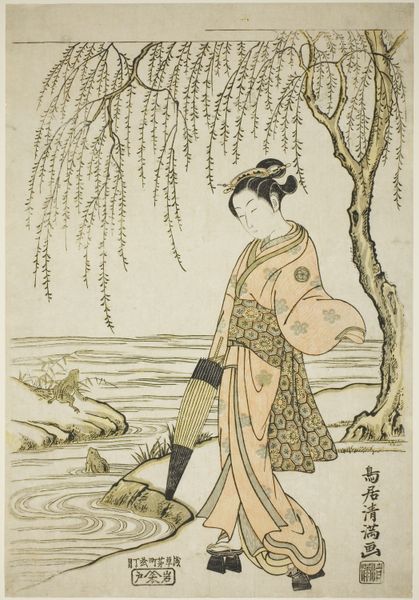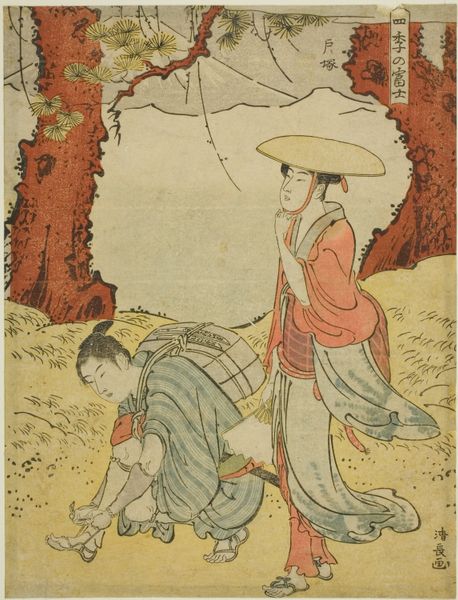
print, woodblock-print
#
ink painting
# print
#
asian-art
#
landscape
#
ukiyo-e
#
japan
#
figuration
#
woodblock-print
#
genre-painting
#
watercolor
Dimensions: 10 3/4 × 8 in.
Copyright: Public Domain
Editor: Here we have Suzuki Harunobu's "Washing Cloth in a Stream," a woodblock print from around 1768 or 1769. It feels like such a simple scene, almost serene, but something about the woman's pose makes me wonder what's really going on here. What do you see in this piece, beyond just the surface of everyday life? Curator: Beyond the surface, indeed. Ukiyo-e prints like this weren't just snapshots of daily life; they were deeply embedded in the social fabric of Edo-period Japan. This image, with its focus on a solitary woman performing a seemingly mundane task, prompts questions about the representation of women and labor in that society. How does her portrayal challenge or reinforce existing power structures? Is she idealized, or presented with a degree of realism? Editor: That’s interesting. I hadn't considered it in terms of power. I was more focused on the potential symbolism of the water and the cloth – purity, renewal, things like that. Curator: Those symbolic readings are valid, but we also need to consider how those symbols intersect with gendered roles and expectations. Is her connection to water a source of empowerment, or does it confine her to a specific sphere of domesticity? Think about the historical context: who had access to leisure and who was bound by labor? This print may be hinting at a nuanced negotiation of those boundaries. Editor: So, it’s less about the individual woman and more about what she represents in society at the time? Curator: Not entirely. It's a dance between the individual and the collective, the personal and the political. The beauty of art is in its ambiguity – it allows us to explore those tensions and grapple with complex questions about identity, class, and representation. The setting is idyllic, yet how idyllic was it, really, for the working women of that era? Editor: I see what you mean. I’ll definitely look at ukiyo-e prints with a more critical eye from now on. Thanks! Curator: Indeed, keep those critical questions in mind. Keep in mind how intertwined philosophy, feminism, and sociology are in art. It can reveal more than what is on the surface.
Comments
No comments
Be the first to comment and join the conversation on the ultimate creative platform.
